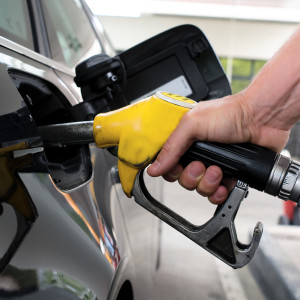Whenever the price at the pump increases, so does the finger-pointing, but much of the blame game over high gasoline prices is neither accurate nor fair and, most important, won’t lead to real solutions. Here are several false targets of America’s anger at record prices:
Gas Station Owners — Despite the big Exxon or Shell or other major oil company signs hanging above many of the gas stations where people fill up, most of these stations are franchise businesses. Proprietors set the price based on market conditions, including what their next gasoline delivery will cost them, not some secret phone call from corporate headquarters.
Ironically, gas stations may actually do worse in times of high pump prices, since they enjoy much bigger profit margins on the sodas, snacks, smokes and other things motorists purchase than they do for gasoline. But at current gas prices customers have less money left over for extras.
Oil Companies — Candidate Joe Biden repeatedly promised to curtail domestic oil drilling for the sake of addressing climate change and started making good on that promise from day one. But now he accuses the industry of holding back on supplies and has launched a Federal Trade Commission investigation into the matter.
To be sure, if oil companies were the ones that had decided to halt new drilling on federal lands in Alaska (as well as the lower 48 and offshore) or refused to build the Keystone XL Pipeline and other needed infrastructure projects, the president might have a credible case of industry deliberately squeezing supplies in order to boost prices. But it is his own administration that did all these things.
Electric Vehicle Skeptics — Vice President Kamala Harris, Secretary of Transportation Pete Buttigieg and others in the administration have touted electric vehicles as a way to laugh your way past the gas station; and they have hinted that EV non-believers are part of the problem. But even with gasoline prices setting records, EVs still have major drawbacks of their own. This includes: sticker prices $15,000 or more above comparable gasoline-powered cars, relatively limited range and long charging times. In addition, electricity prices are also headed up due to some of the administration climate change policies affecting gasoline prices. And reliability is growing issue. Anyone who has suffered through a power blackout lately will think twice about buying an EV.
For these reasons, EVs sell only to the extent they are heavily subsidized (up to $7,500 in federal tax credits, as well as several state incentives) and even then have captured less than 5 percent of the new-vehicles market.
World Leaders — Vladimir Putin deserves a good share of blame for the price run-up in the weeks since the Ukraine invasion, but by then prices had already jumped by more than a dollar per gallon above the previous year. Furthermore, if domestic production wasn’t handcuffed by the Biden administration, the invasion would likely have a less severe effect as we are seeing.
Donald Trump — Gasoline was cheaper when Trump was president, and he aggressively pursued an agenda of “energy dominance” that included several petroleum supply-expanding projects that have since been blocked by his successor. Nonetheless, that has not deterred some from finding orange-man culpability. The Trump-blamer rationales are understandably hazy, but they suggest that the former president contributed to closing the domestic oil spigot, initiated the federal spending increases that contributed to overall inflation, including gasoline, and facilitated Russia’s invasion of Ukraine. Why none of this bad stuff happened until Biden took over is apparently just a coincidence.
If we can get beyond scapegoats, we can debate solutions. One such solution that should be crystal clear is making the most of the oil we have in the United States. Maximizing domestic oil production makes a lot of sense when the world is at peace and even more in times like these when it isn’t.

